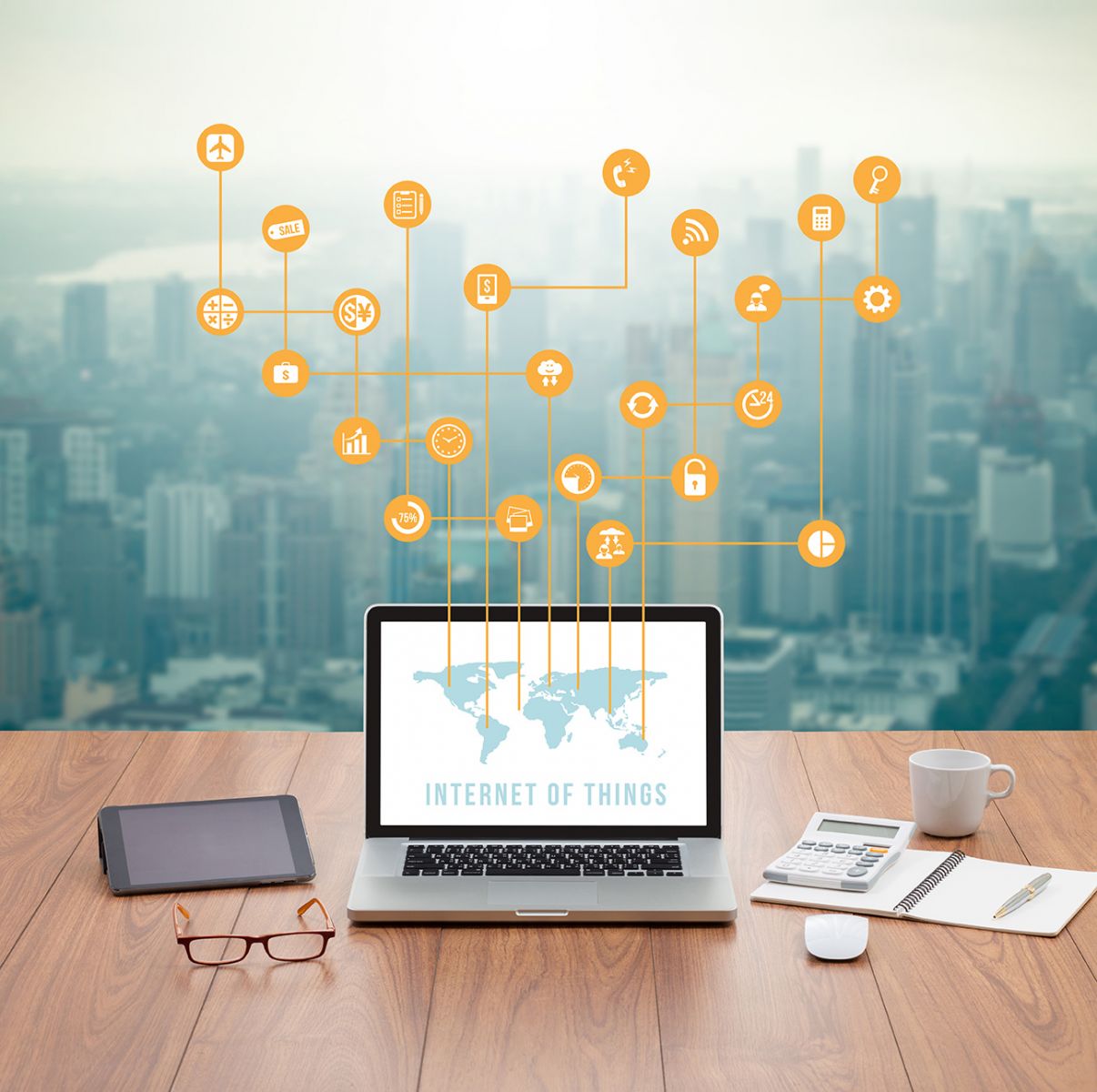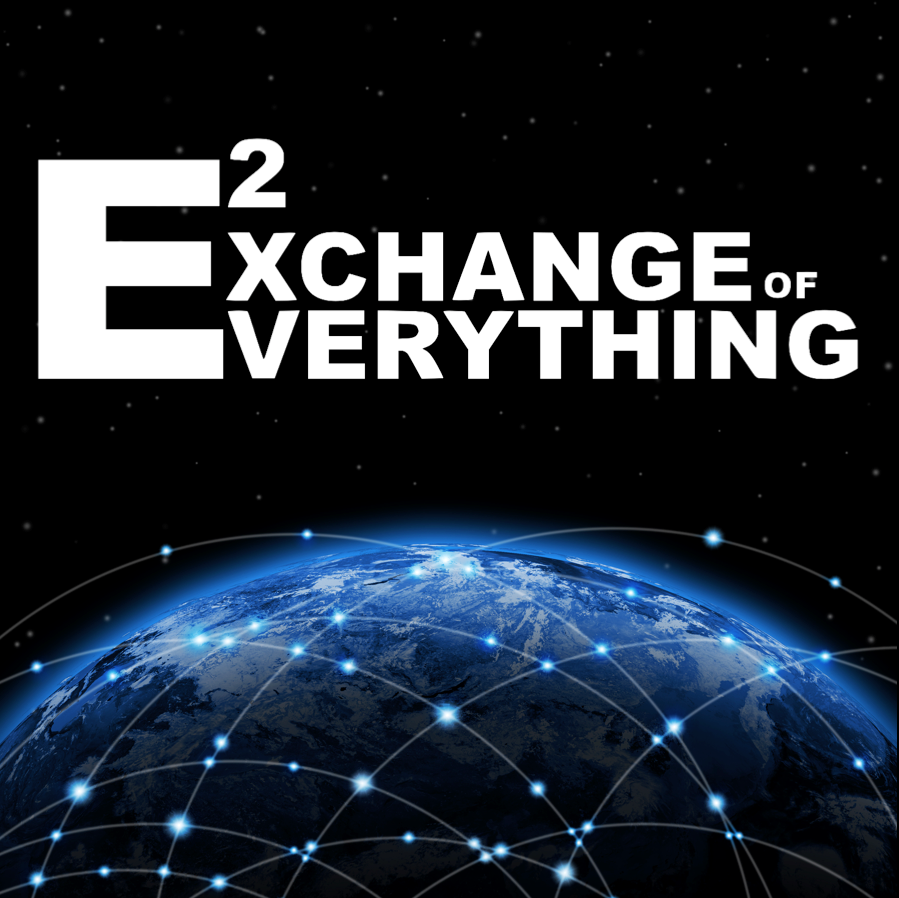Prepare for the New World of E2: The Exchange of Everything
Back in early nineties, straight out of college, I began working on Wall Street building trading floor technology and trying to keep up with the growth of the public markets and innovation in platforms. In my early twenties, I was charged with engineering and evolving sophisticated trader voice applications, connecting thousands of participants – buyers, sellers, brokers, banks and, of course, exchanges.
Nasdaq was becoming the engine of growth for technology companies, while hundreds of new companies were also ringing the bell at the NYSE, and hundreds of derivative products were being rolled out to institutional and individual investors numbering in the millions.
It was “real-time all the time” with twenty-four hour global trades emerging, and through all this – seconds meant millions, and there was no tolerance for anything other than “pin drop” audio. There was too much money on the line.
One day, when my team and I were trying to figure out how we could run more copper under the trading floor which was already a tangled mess of spaghetti wires, it hit me – this thing called the Internet – combined with fiber optics – and IP protocol – and VoIP – would unlock enormous value. My thinking was transformed, and this lead me to start-up and sell several companies which simply made real-time communications better.
 Decades later, this journey has brought me back to “building exchange technology” but this time on a much bigger, much broader and much more meaningful level.
Decades later, this journey has brought me back to “building exchange technology” but this time on a much bigger, much broader and much more meaningful level.
There are billions of end-points flourishing on the Internet of Things (IoT) and there are unlimited possibilities when it comes to Real-Time Communications (RTC) particularly as better software, new standards, and powerful platforms make embedded, contextual human communications possible.
Where I see the world expanding into a completely disruptive realm is at the intersection of IoT and RTC – what I am calling the Exchange of Everything (EoE).
Machines and people continue to live in more intuitively bonded ways – we can do just about anything on our smartphones, and with the combination of more powerful and affordable devices, bigger and better networks, easier and still secure access through cellular, WiFi, mesh and more – exponential doesn’t even begin to describe the “telecosmic” growth over the next few decades.
The opportunities for companies in the communications industry are without boundaries when they begin to think about how to create E-squared value.
“Telecom” started with exchanges after the telegraph made information sharing possible (post offices, railway stations, newspapers, government agencies, and stock exchanges through the old “tickers.”) The telephone exchange organized all this through a “switchboard” which distributed signals beyond the point-to-point system.
Fast forward to today: in the fiber optics and Internet protocol world, we have transformed beyond the initial voice peering exchanges in the soft-switched world, to incredibly sophisticated Internetworked Packet Exchanges (IPX) enabling billions of “conversations” per second to occur and ensuring network service providers are being paid.
Just as the original telegraph and switched voice innovations gave rise to financial exchanges a hundred years ago, the Internet continues to give rise to the possibility to trade nearly everything online.
Music – goods – services. Finding a date – finding a car – finding a room. Choosing a restaurant – choosing a doctor – choosing a home. And now individuals are monetizing their time – whether joining Uber, renting their house out on Airbnb, or selling their talents by the hour as independent or organized experts.
Entire businesses are being built around “Sherpas” to guide us through this – Siri, Cortana, Alexa – even avatars who present themselves as intuitive, sensitive “doctors” able to diagnose and treat illness. Last year Google, Microsoft, Facebook, Amazon and Twitter made huge investments in Artificial Intelligence, with most providing open-sourced tools for developing AI projects.
While these robotic Internet guides serve as “brokers” on the Exchange of Everything, what we may be missing in the middle of all these automations and inventions is that sometimes – there’s nothing quite like reaching another human being.
On the Exchange of Everything, live experts will be reachable in seconds to save lives. One of the most exciting projects Kandy, GENBAND’s communications as a service platform subsidiary, is working on is TeleMedCo, powered by IBM Watson.
 This system is being built for Emergency Rooms, and with the combination – and Exchange – of software, data, AI, protocol, platforms and people – a cardiologist can be found in a heartbeat. Inside this Exchange is a directory of doctors and specialists, with profiles set up and real-time communications policy established so a doctor is alerted when his or her patient is admitted. The doctor receives a HIPAA compliant text message, and can click on the link and immediately establish a session with the ER – with both sides looking at the patient’s electronic medical record in order to more accurately and quickly diagnose and treat.
This system is being built for Emergency Rooms, and with the combination – and Exchange – of software, data, AI, protocol, platforms and people – a cardiologist can be found in a heartbeat. Inside this Exchange is a directory of doctors and specialists, with profiles set up and real-time communications policy established so a doctor is alerted when his or her patient is admitted. The doctor receives a HIPAA compliant text message, and can click on the link and immediately establish a session with the ER – with both sides looking at the patient’s electronic medical record in order to more accurately and quickly diagnose and treat.
All this is captured in the record, and can be used to continually refine and improve the quality of outcomes.
And all this leads to a radically new Human Connected Experience.
When we bring every endpoint – and everybody – onto the Exchange of Everything – the opportunities for creativity and creating value are limitless. This is why we created Kandy. When real-time communications are embedded into how we live, we are no longer “dialing the phone” but intuitively and almost invisibly living digitally.
When we are born we are connected – much like given a name and a social security number. We are monitored for everything for our entire life.
We are hooked up to big data processing like “Watson” which can be constantly evaluating every human condition we experience. It will be able to corollary things like whether rest effects health. It can see stress coming long before it happens. It can see conditions like depression and provide warning indicators.
We are able to evaluate our genomes against likely defects and keep us in the safe zone. We are able to measure our overall health and interact with exactly the right doctors, health experts, fitness instructors… and more.
The Exchange of Everything – is Everywhere. Whether for health or just happiness, we can buy nearly anything online, now assisted with shopping bots or service bots, embedded into social networks like Facebook, making buying easier, more fun and service more “human” when experts in high value products appear on a shopper’s mobile phone while he or she is browsing in a 3D store.
 There’s a lot to process on the EoE.
There’s a lot to process on the EoE.
What’s my message to the world’s largest communications service providers and the systems integrators and software developers working with them? It’s time to switch things up. The EoE can’t grow on a switched network. It’s time to truly transform to all-IP, to protect your subscribers, and grow service revenue from those subscribers and the new subscribers you can attract when you innovate.
Understand and leverage your assets. Networks are incredibly valuable and the challengers like Facebook, Skype, Twitter, WhatsApp and more know it. They’ve used your network investments to their advantage. With the right strategy – the right way of thinking – you can harness what you have and take advantage of ready-made platforms like Kandy and applications like fring to fully engage with “The Exchange of Everything.”
Exchanges make money everywhere, on membership fees, transaction fees and data – big data. Exchanges support entire economies – banks, brokers, traders, buyers, sellers, analysts, news organizations. Exchanges are the engines behind local and global growth, and the vibrant marketplaces they spawn create jobs, jobs create income, and income creates a flow of currency into the system which can fix the global economy.
X=CHANGE
There is no industry better positioned to take advantage of the “Exchange Economy” than our industry – but it requires us to think differently and invest in innovation and be willing to change.
Original post here.